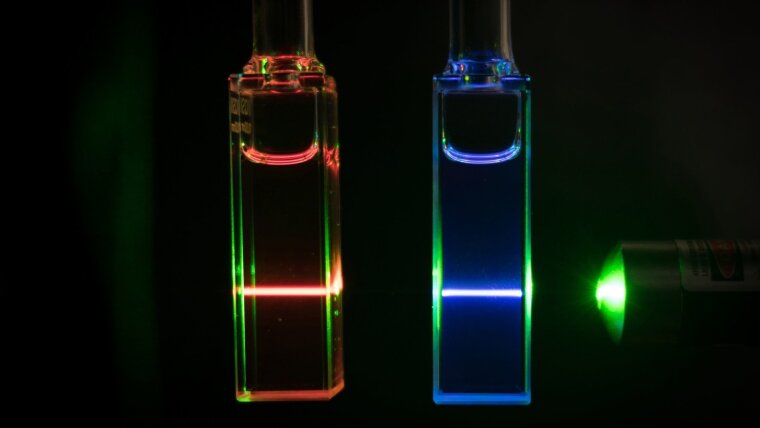
The joint transregional Collaborative Research Center "Light-driven Molecular Catalysts in Hierarchically Structured Materials - Synthesis and Mechanistic Studies" of the University of Ulm and the Friedrich-Schiller-University Jena investigates the basic functionality as well as first applications of innovative photocatalytically active materials. Other project partners are the University of Vienna, the Max Planck Institute for Polymer Research in Mainz as well as the Leibniz Institute for Photonic Technology e. V. in Jena.
On the part of CEEC Jena Prof. Dr. med. Benjamin Dietzek (Deputy Spokesperson) as well as Prof. Dr. Ulrich S. Schubert, Prof. Dr. Felix H. Schacher, Prof. Dr. Stefanie Gräfe, Prof. Dr. Kalina Peneva and Prof. Dr. Andrey Turchanin are involved.
The CRC/TRR CataLight addresses fundamental challenges in the design of photocatalytically active materials for solar energy conversion. Inspired by the design principles of natural photosynthesis, CataLight will provide fundamental insights into the performance of molecular photocatalysts embedded in functional and hierarchically structured soft matter materials.
To this end, general synthetic strategies are developed to tune the reactivity of molecular light-absorbers and catalysts. Complementary synthetic routes will be established to access functional polymeric matrices for the site-specific binding of the molecular building blocks. In addition, synergistic reactivity and stability control by tuning the molecule-matrix interactions will become possible. Experimental and theoretical analyses across multiple length- and timescales will be used to rationalize photochemical reactivity and to understand new effects arising from embedding such components within a suitable matrix.
Such effects will lead to novel material properties, e.g. materials capable of self-regulating their photocatalytic activity or materials where photocatalytic activity can be repaired both on a molecular and material level. CataLight will lead to new paradigms, which break down the current boundaries between the realms of molecule-based reactivity and bottom-up material design. This will result in fundamentally new, knowledge-guided concepts for light-driven productive chemistry in hybrid materials – opening new research opportunities for chemistry, biology and materials science.
Spokesperson of the CRC/Transregio at the Coordinating University
Prof. Dr. Sven Rau
Institute of Inorganic Chemistry I
Ulm University
Albert-Einstein-Allee 11
D-89081 Ulm
Phone: +49 731 5023900
Fax: +49 731 5023039
sven.rau@uni-ulm.de
Co-Spokesperson of the CRC/Transregio at the Friedrich Schiller University Jena
Prof. Dr. Benjamin Dietzek
Institute of Physical Chemistry
Friedrich Schiller University Jena
Helmholtzweg 4
D-07743 Jena
Phone: +49 3641 948360
Fax: +49 3641 948302
benjamin.dietzek@uni-jena.de
Management of the CRC/Transregio at the Coordinating University
Dr. Lydia Petermann
Institute of Inorganic Chemistry I
Ulm University
Albert-Einstein-Allee 11
D-89081 Ulm
Phone: +49 731 5023868
Fax: +49 731 5023039
lydia.petermann@uni-ulm.de